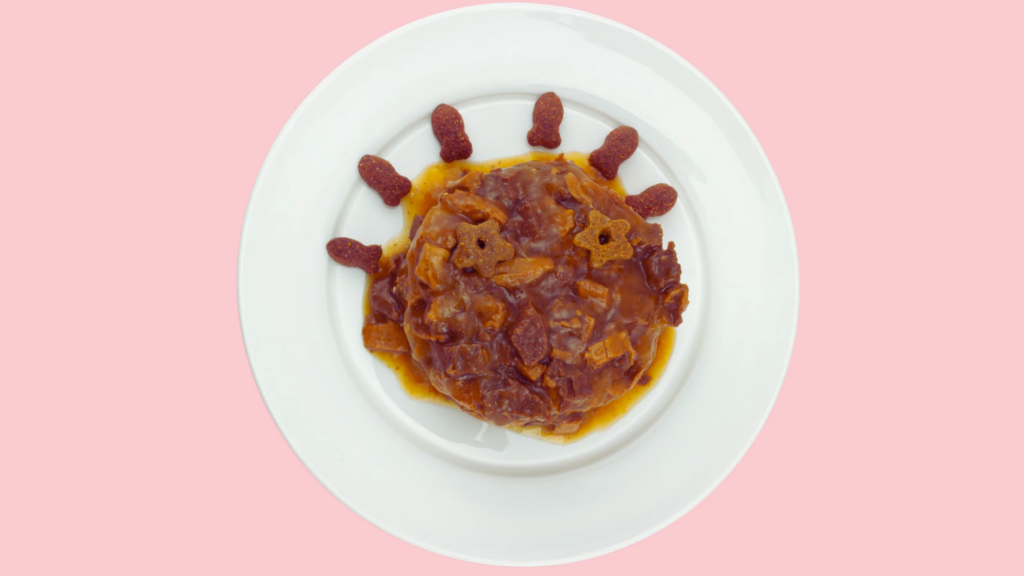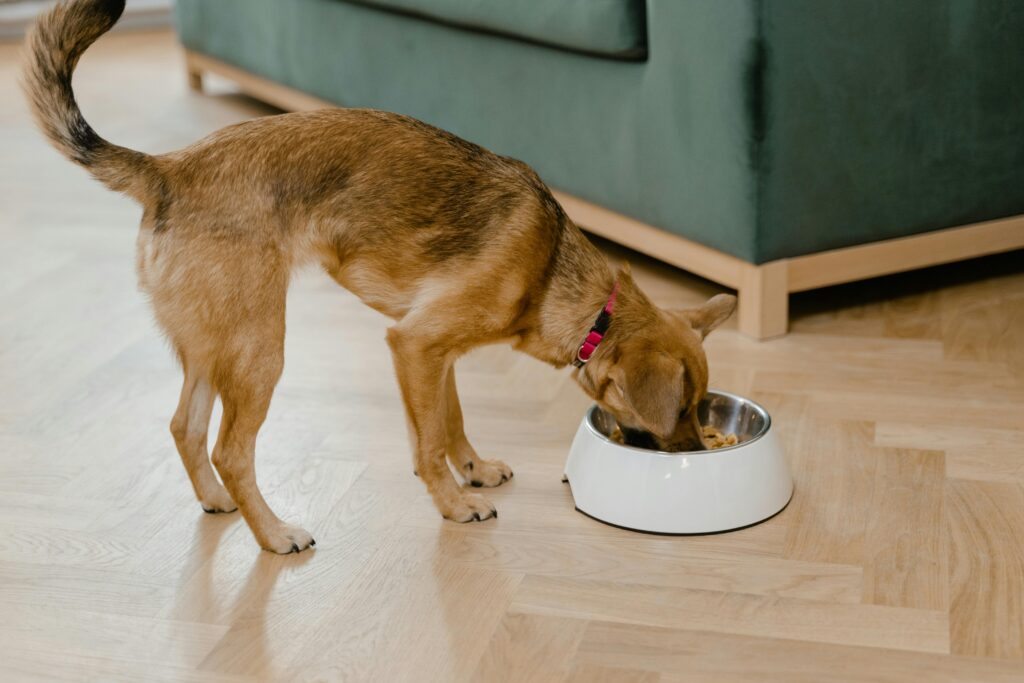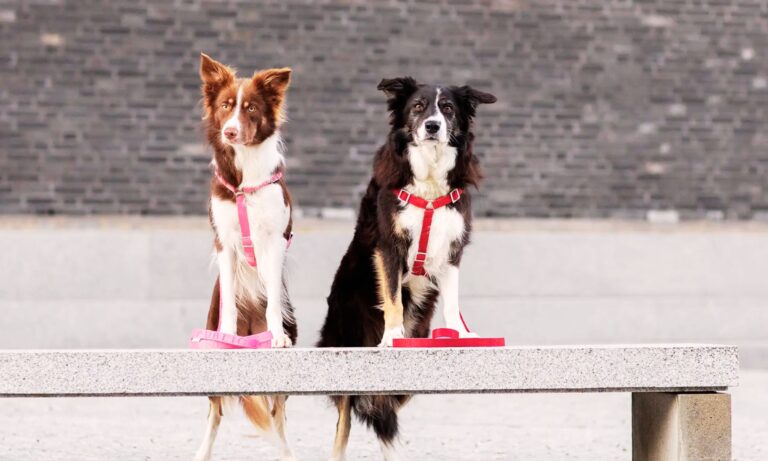| Summary: Wet dog food is highly palatable, hydrating, and easier to chew, making it ideal for picky eaters and senior dogs. However, it can be more expensive, spoil quickly, and may contribute to dental issues. A balanced diet, sometimes mixing wet and dry food, ensures optimal health for your dog. |
Choosing the right food for your dog is essential for their health, longevity, and overall well-being. Among the many pet food options available, wet dog food remains a popular choice for many dog owners. While it offers several benefits, including high moisture content, palatability, and rich nutritional value, it also has some drawbacks, such as cost, shelf-life, and dental concerns. I’ll explore the advantages and disadvantages of wet dog food, helping you make an informed decision on whether it’s the right choice for your furry friend.
The recommended size collar for an English Cocker Spaniel usually ranges from 12 to 18 inches, providing a snug and comfortable fit for your dog.
Blog Highlights
ToggleQuick Fix FAQ Table: Advantages and Disadvantages of Wet Dog Food
| Question | Answer |
| Why choose wet dog food? | High moisture content, tasty, and easy to chew. |
| Is wet food better for hydration? | Yes, it helps prevent dehydration, especially in dogs that drink less. |
| Does wet food improve digestion? | Yes, it’s gentler on sensitive stomachs and easier to digest. |
| Can wet food cause dental issues? | Yes, it lacks crunch, which helps clean teeth. Regular brushing is needed. |
| Is wet dog food more expensive? | Generally, yes. It costs more than dry kibble per serving. |
| Does wet food spoil quickly? | Yes, it must be refrigerated and used within 2-3 days. |
| Is wet food good for senior dogs? | Yes, it’s easier to chew and digest for older dogs. |
| Can I mix wet and dry food? | Yes! It balances taste, nutrition, and texture for a complete diet. |
Advantages of Wet Dog Food

1. High Moisture Content Promotes Hydration
One of the biggest advantages of wet dog food is its high moisture content, which can significantly benefit a dog’s overall hydration. Wet dog food typically contains 70-80% water, compared to dry kibble, which only has 10-12% moisture.
Proper hydration is essential for a dog’s kidney function, digestion, circulation, and temperature regulation. Many dogs, especially those that are picky about drinking water, benefit from wet food as it ensures they receive enough fluids in their diet. This is particularly important for dogs prone to kidney disease, urinary tract infections (UTIs), and bladder stones, where hydration plays a key role in preventing health complications.
For older dogs with weaker kidney function or dogs living in hot climates, adding wet food to their diet can help prevent dehydration and keep them feeling energetic and healthy.
2. More Palatable and Appetizing
Wet dog food is generally more appealing to dogs compared to dry kibble. The rich aroma and meaty texture make it irresistible, especially for picky eaters or dogs with reduced appetite due to illness, stress, or aging.
Dogs have an incredibly strong sense of smell, and since wet food releases stronger aromas than dry food, it enhances the eating experience. This can be beneficial for senior dogs who have lost some of their sense of smell or dogs recovering from medical procedures.
For dog owners struggling with getting their pet to eat, wet food can act as an enticing meal booster, ensuring that their pup receives the necessary nutrients.
3. Easier to Chew and Digest
Wet dog food has a soft texture, making it easier to chew and digest, which is particularly beneficial for:
- Senior dogs with weak or missing teeth
- Puppies transitioning from mother’s milk to solid food
- Dogs with dental issues, such as gum disease or sensitive teeth
- Dogs recovering from surgery or illness
Unlike dry kibble, which requires more effort to chew, wet food is gentle on the mouth and throat, making it a comfortable choice for dogs who struggle with eating hard food.
Additionally, wet food is often easier on the stomach, making it ideal for dogs with sensitive digestion or food allergies. Many wet food formulas contain limited ingredients and fewer fillers, which helps reduce digestive discomfort, bloating, and food intolerances.
4. Higher Protein and Nutritional Density
Many high-quality wet dog foods contain more real meat and protein than some dry kibbles. Since wet food is not as heavily processed as dry food, it often retains more natural nutrients and has fewer artificial additives and preservatives.
A protein-rich diet supports:
- Muscle development and maintenance
- Stronger immune function
- Healthier skin and coat
Additionally, wet food is often formulated with added vitamins, minerals, and omega fatty acids, promoting better overall health.
5. Helps with Weight Management
Since wet dog food is lower in carbohydrates and calorie-dense, it can be beneficial for dogs that need to lose weight or maintain a healthy weight. The higher water content makes the food more filling, so dogs tend to feel fuller faster and longer, reducing the chances of overeating.

Many overweight dogs benefit from switching to wet food because it allows them to eat a satisfying portion while consuming fewer calories compared to dry kibble. To find the perfect fit, learn more about what size collar for a Bichon, ensuring your dog’s comfort and safety.
Disadvantages of Wet Dog Food
1. More Expensive Than Dry Food
One of the main drawbacks of wet dog food is its higher cost compared to dry kibble. Due to its higher meat content, moisture levels, and packaging requirements, wet food tends to be significantly more expensive per serving than dry food.
For pet owners with multiple dogs or large breeds, the cost of feeding wet food exclusively can quickly add up. Many dog owners choose to mix wet food with dry kibble to get the best of both worlds without breaking the budget.
2. Shorter Shelf Life and Spoilage Concerns
Once opened, wet dog food has a short shelf life and must be refrigerated and used within 2-3 days. Unlike dry kibble, which can last for weeks or months when stored properly, opened cans or pouches of wet food can spoil quickly, especially if left out at room temperature for too long.
Spoiled wet food can grow harmful bacteria or mold, which can lead to food poisoning or digestive issues in dogs. Pet owners must be diligent about storing wet food properly and ensuring that their dog eats the entire serving within a reasonable timeframe.
3. Can Contribute to Dental Issues
Unlike dry kibble, which can help reduce plaque buildup, wet food does not provide the same level of dental benefits. Since it is soft and does not require chewing, it does not scrape against the teeth like dry kibble does.
Over time, regular consumption of wet food without proper dental care can contribute to:
- Plaque and tartar buildup
- Gum disease and bad breath
- Higher risk of cavities and tooth decay
To counteract these dental issues, pet owners should consider brushing their dog’s teeth regularly and offering dental chews or toys to help maintain oral health.
4. Messier and Less Convenient to Serve
Wet dog food can be messier to serve than dry kibble. It requires spoons or scoops, and leftover portions must be sealed and refrigerated to prevent spoilage. Additionally, if a dog doesn’t finish their entire meal in one sitting, the leftover wet food can become sticky, smelly, and attract pests.
Dry kibble, on the other hand, is much easier to handle, store, and measure, making it the preferred choice for busy pet owners.
5. May Cause Loose Stools in Some Dogs
While wet food is easier to digest, it may not agree with every dog’s digestive system. Some dogs may experience loose stools or diarrhea when introduced to wet food, especially if the transition is done too quickly or if the food contains rich ingredients their stomachs are not used to.
To avoid digestive upset, it is recommended to gradually introduce wet food into a dog’s diet and observe any changes in their stool consistency. Discover the ideal option by exploring what is the best collar material for a Bichon Frise to ensure your pet’s comfort and durability.
Mixing Wet and Dry Food: The Best of Both Worlds?
Given the advantages and disadvantages of wet dog food, many pet owners wonder if combining wet and dry food could be the best option for their furry friends. A wet and dry food mix offers a balanced approach, allowing dogs to enjoy the hydration and palatability of wet food while benefiting from the dental health and affordability of dry kibble.

Here’s why mixing wet and dry dog food can be a smart choice:
1. Improved Hydration Without Overreliance on Wet Food
One of the key benefits of wet food is its high moisture content, which keeps dogs well-hydrated. However, feeding only wet food can be expensive and inconvenient due to storage and spoilage concerns. By mixing a portion of wet food with dry kibble, dogs can still get the hydration benefits while consuming a diet that’s more cost-effective and longer-lasting.
This is particularly beneficial for:
- Dogs that don’t drink enough water
- Senior dogs with kidney concerns
- Dogs living in warm climates
2. Balanced Texture for Picky Eaters
Some dogs love the crunch of kibble, while others prefer the softness of wet food. By mixing the two, you create a more enticing meal, satisfying both texture preferences. This is ideal for picky eaters who may turn away from plain kibble but enjoy it when it’s coated with flavorful wet food gravy.

3. Supports Dental Health While Enhancing Taste
Dry kibble helps to scrape plaque off teeth, reducing the risk of gum disease and tartar buildup. However, some dogs find kibble too hard to chew, especially those with dental issues or smaller jaws. Adding wet food softens the meal slightly while still allowing some of the dental benefits of kibble.

4. Cost-Effective Nutrition
Exclusively feeding wet food can be expensive, especially for large dog breeds. A mixed diet allows pet owners to provide the taste and hydration of wet food without straining their budget. The American Staffordshire Terrier’s coat type is short, sleek, and easy to maintain with regular brushing.
Final Thoughts: Is Wet Dog Food the Right Choice?
Wet dog food offers several health benefits, including higher hydration, increased palatability, and enhanced nutritional value. It is particularly beneficial for senior dogs, picky eaters, and dogs with dental issues or food sensitivities.
However, it also comes with drawbacks such as higher cost, shorter shelf life, and potential dental concerns.
For many dog owners, the best approach is to combine wet and dry food to get the advantages of both while mitigating their disadvantages.
Ultimately, the best choice depends on your dog’s age, health, dietary needs, and your budget. Consulting with a veterinarian can help determine the optimal diet for your furry friend’s long-term health and happiness. The best collar size for an American Staffordshire Terrier ensures a comfortable and secure fit for your dog during walks and training.





